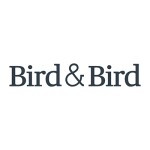Last week of Trinity term, before the courts close for the summer vacation, is usually a very busy period for the High Court. 2021 seems to have been no exception, particularly for the recently appointed Mellor J (sitting as Chancery Interim Applications Judge) who had before him various applications, and among them a number of applications to expedite a patent trial (Abbott Laboratories v Dexcom Incorporated [2021] EWJC 2246 (Pat); Neurim Pharmaceuticals & Flynn Pharma v Generics UK & Mylan [2021] EWHC 2198 (Pat); Philips v Xiaomi [2021] EWHC 2170 (Pat)).
UK IP practitioners will be aware that the Patents Court has been extremely busy in recent times and there is no sign of things slowing down. However, that has meant that the time to get to trial has been edging upwards – so can an application for expedition help parties to ‘jump the queue’?
Expedition: four Gore factors
Expedition applications are not uncommon, but they are also not the norm. The leading case on expedition generally is Gore v Geox, which sets out four factors to be considered when making the application (the Gore factors):
(1) Whether the applicants have shown good reason for expedition;
(2) Whether expedition would interfere with good administration of justice;
(3) Whether expedition would cause prejudice to the party; and
(4) Whether there are any other special factors.
The Nicoventures points
Expedition applications in patent cases also come before the courts occasionally. The relevant factors applicable to such cases were recently considered in detail by Birss J (as he was then) in Nicoventures v Philip Morris, who added three particular points to the Gore factors:
(1) The court decides applications for expedition according to the relevant principles, and not simply by approaching them on the basis that someone who happens to come to the court wishing for their case to be speeded up will get it;
(2) A mere wish for commercial certainty is not enough to justify expedition – a ‘good reason’ has to be established in evidence; and
(3) The court will take the German ‘injunction gap’ into account as a factor, but it is never enough on its own (this is a point that is specific to patent cases, where there are parallel proceedings in Germany).
A feature of the German bifurcated system is that an injunction for infringement may be granted in relation to a patent that is later revoked by the Federal Patent Court, or in EPO opposition proceedings. This is known as the ‘injunction gap’.
The Gore factors (as supplemented in Nicoventures) were considered to differing degrees in the applications before Mellor J in the last week of term. In Abbott v Dexcom, the application for expedition was dismissed, whilst in Neurim v Mylan, the application for expedition was granted as the particular circumstances of the case provided ‘a good reason’ under Gore for a degree of expedition – this was even though one side would be deprived of their chosen lead barrister, which was not regarded as sufficient to outweigh expedition.
In Philips v Xiaomi, it was not necessary to go into the Gore factors as the issues fell into place by themselves, largely for practical reasons. In particular, when it was put to the parties that the trial, if it were to be expedited, would have to float for an indefinite period – the upshot of the Patents Court being very busy – it quickly became clear that this was an unappealing prospect for both sides.
Busy period for the Patents Court
All in all, as Birss J pointed out in Nicoventures, the reality is that there are “a large number of litigants in the business and property courts who would like their cases to be tried earlier, therefore granting expedition involves an inevitable degree of queue-jumping and therefore there has to be a good reason for it”.
That degree of queue-jumping is potentially more substantial in the current times, particularly when the Patents Court (and General Chancery) lists are already very busy, and it is likely to stay that way for a while. It will be interesting to see whether despite that, or rather because of it, we will see more applications for expedition in the future.
Jae Park
Senior associate, Bird & Bird












